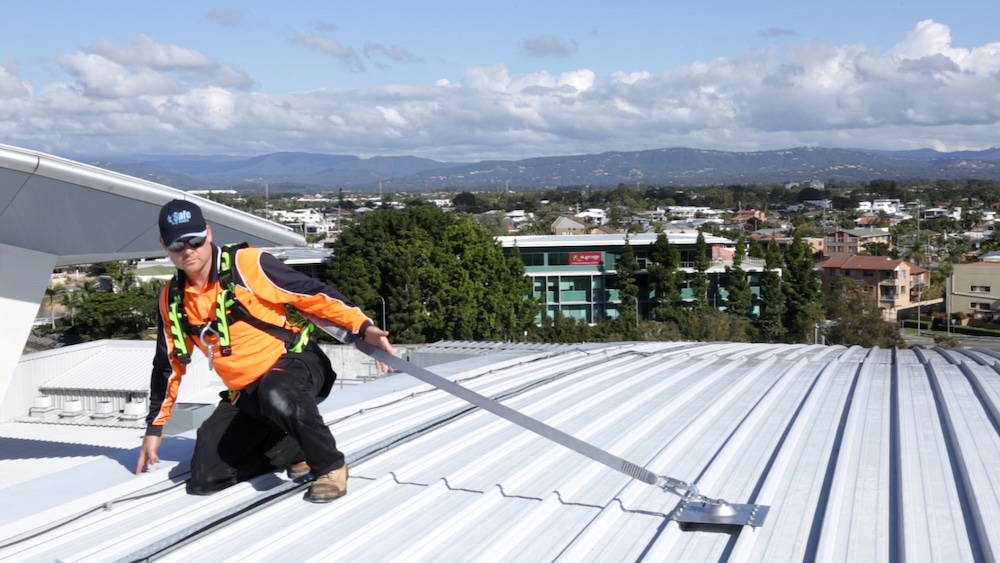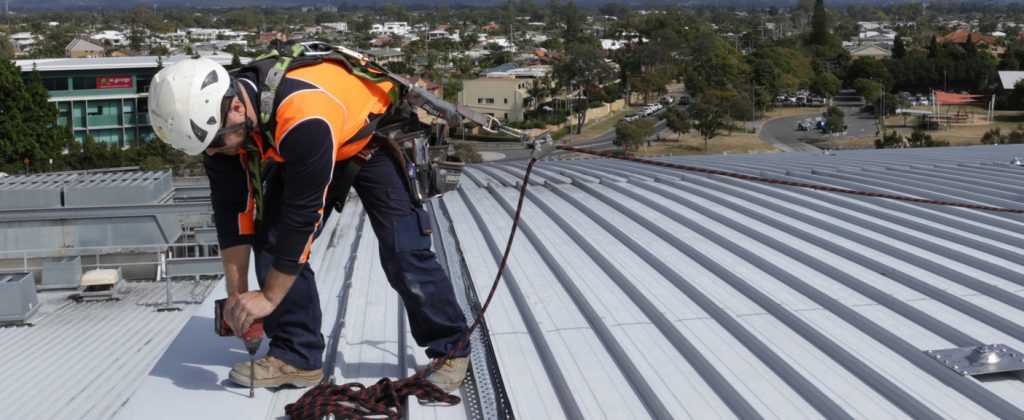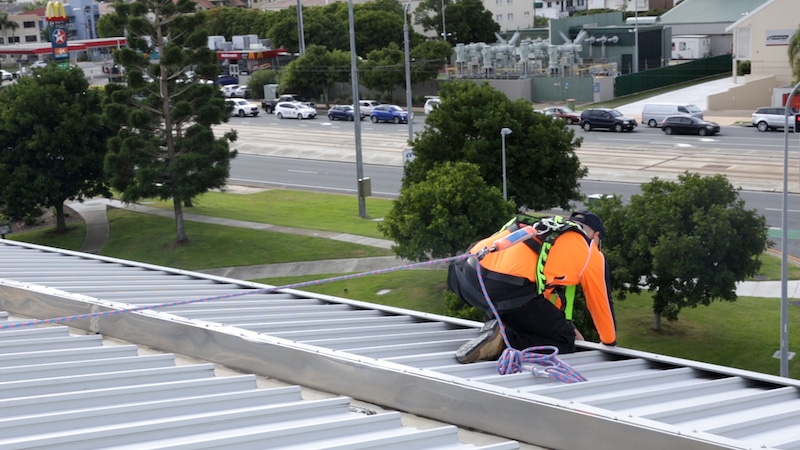FALL ARREST METHOD
When working within 1m of a fall zone, you will need to constantly assess your position and adjust your rope line accordingly to prevent yourself from being exposed to a fall.
This is known as the Fall Arrest Method. Working in fall arrest requires a high level of skill and concentration. Prior to working in fall arrest, you must set up your rescue system and have your rescue person on standby in the green zone (designated safe zone) supervising your work. If a fall was to occur, the rescue plan must be put into action immediately and should not take longer than five minutes.
To properly use the Fall Arrest method, once attached, move to within 1m of the edge. At this stage, it is vital that you determine the maximum length that you can adjust your rope line before you are exposed to a fall. To lessen the risk of a fall during this process, move to either one or both knees.
Once on your knees, carefully move towards the fall edge. Adjust your rope line so that you can reach your work area but are unable to fall off the roof. Due to the high risk of a fall when working so close to the edge, you must employ the safe adjustment method when readjusting your rope line. To do this slightly lean back towards your anchor point and away from the fall edge, so the tension is taken off your rope line. This movement also ensures that your centre of gravity is pointing you away from the fall edge. Now if you slip your movement will be away from the edge and not towards it. Adjust your rope line by no more than 300mm at a time. Release the adjustable rope grab testing that it has correctly locked onto the rope, turn and face square to the fall edge, hands in front of you and move forward until you have put tension on the rope. Assess your position. If you need to move further forward, determine how far this is and only move the adjustable rope grab this distance, repeating the Safe Adjustment Method. By employing this method you are controlling the risk of a fall while in the process of adjusting your rope length.
Never attempt to adjust your rope line while leaning forward in this position with the rope under tension. Immediately upon releasing the rope grab you will plunge forward in an uncontrolled manner which may result in a fall over the edge.
When working in fall arrest, even though you will constantly adjust your rope line so that you are not able to fall, the risk of an incident this close to the edge is extremely high.
For this reason, when working in fall arrest it is vital that you follow these six rules
- Always face towards the fall edge and if possible work on one or both knees
- Never allow slack in your rope line
- Never adjust your rope line when it is under tension
- Always use the safe adjustment method
- Never work alone and
- Have a rescue system ready for immediate deployment
DIVERSION ANCHORS
A Diversion anchor is a secondary attachment point positioned close to an edge that limits the risk of a pendulum fall.
To use a diversion anchor, while still attached to a primary anchor, move in a direct line towards the diversion. Upon reaching the anchor, drop to one knee and adjust your rope line so that the rope grab is past the diversion anchor. Now attach your rope line to the anchor eyelet via a karabiner. You can now move carefully forward to your work area. Ensure that you use one of the safe work methods already shown as you come to the edge.
THE CONSTANT ATTACHMENT METHOD
If the roof pitch is over 15degrees you must use the constant attachment method when moving around the roof if you are using anchor points only. One of the ways this can be achieved is by modifying your rope line into a twin tail rope.
Once attached to the first anchor, move in a direct line until you reach the second anchor. Draw through approximately 1m of rope and mark the length of rope between the anchors. At this mark tie a figure 8 knot and attach you’re your rope line to the anchor via a karabiner.
Stand and walk back to the first anchor and disconnect your rope line. As you can see, you now have twin lengths of rope. Move to the closest fall edge and ensure that the rope lengths do not allow you to reach the edge of the roof. Now you can walk to the third anchor and attach. When walking back to anchor 2 ensure that you constantly adjust your rope line so that it remains under tension. Disconnect the karabiner and continue the process. By using this method you will remain connected at all times. However you must be aware that if the distance between the anchor points increases or decreases you must readjust your twin rope lengths to ensure you remain in fall restraint.
SUMMARY
When working close to a fall edge and using a fall arrest system as your control measure, you must ensure that you employ the most appropriate and safe attachment method. Failure to follow the methods we have just demonstrated may result in a fall.





